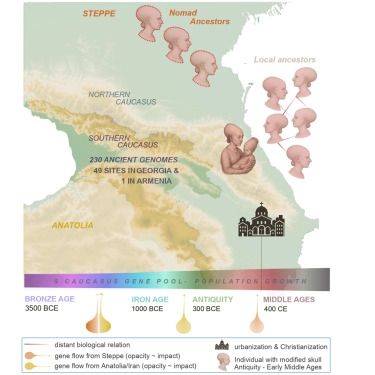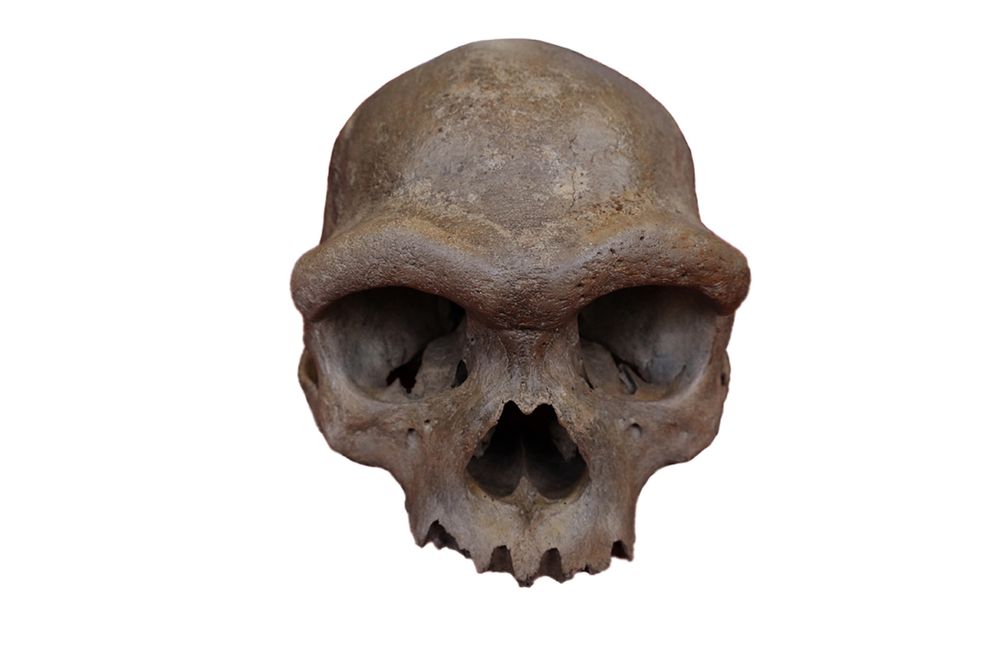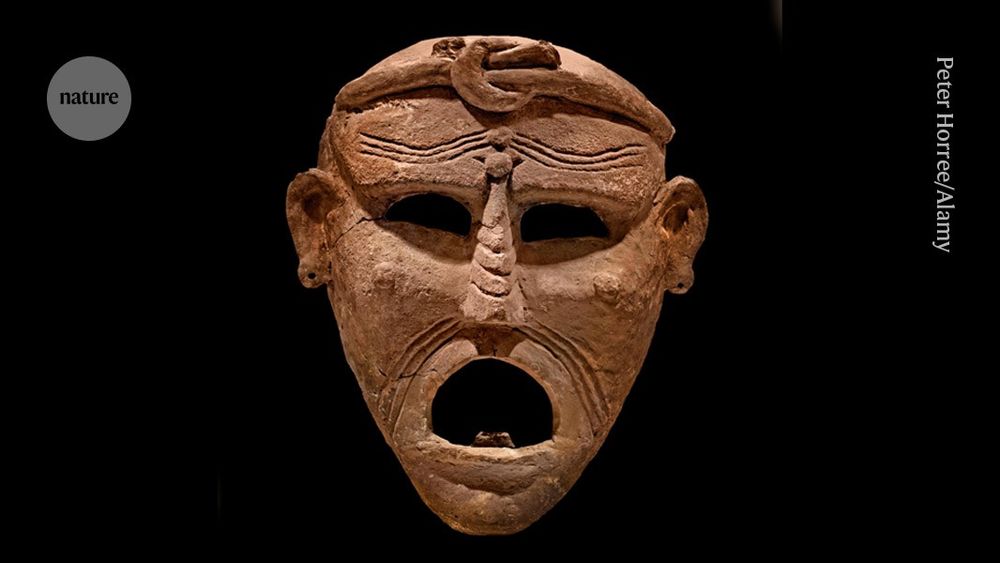SKULL OF THOMAS AQUINAS: TAKE A LEFT NOW
PRIEST: No, the GPS says we have to keep going—
SKULL: I KNOW A SHORTCUT
PRIEST: Do you remember the last ti—
SKULL: FOR THOSE WITH FAITH, NO EVIDENCE IS NECESSARY; FOR THOSE WITHOUT IT, NO EVIDENCE WILL SUFFICE
10.12.2025 17:10 — 👍 13164 🔁 4699 💬 104 📌 222

GitHub - alanrogers/popgen: A course on population genetics
A course on population genetics. Contribute to alanrogers/popgen development by creating an account on GitHub.
I taught (and co-taught) a course on human population genetics from 2000-2024. Having retired, I'm now making all the course materials public: github.com/alanrogers/p... #popgen #evbio
27.11.2025 19:10 — 👍 256 🔁 92 💬 4 📌 0

Researchers say they have verified and sequenced Hitler’s DNA – and found a genetic disorder | CNN
Analysis of Adolf Hitler’s DNA reveals he may have had a rare genetic disorder that can delay puberty.
As I told the CNN, without details and data it is not possible to assess the claims.
More importantly, the scientific value of this media campaign, balanced against the possible stigmatization of individuals with these real conditions today, is highly questionable. edition.cnn.com/2025/11/13/s...
14.11.2025 22:28 — 👍 71 🔁 23 💬 5 📌 6
Putting aside the deeper issues of why this analysis was done and how it has been promoted, the choice to broadcast a tv show before releasing a preprint should make people skeptical of the results. How can one be sure of their scientific claims?
15.11.2025 03:19 — 👍 81 🔁 21 💬 5 📌 4
✨Thrilled to share that the first chapter of my Ph.D. thesis is NOW OUT in Science Advances! ✨🥳🎉 🧬. This couldn't have been possible without the support of everyone involved
@genscapelab.bsky.social, @nirajrai.bsky.social, @cdelafc.bsky.social, @jaurban2204.bsky.social, @mootspoints.bsky.social
30.10.2025 21:44 — 👍 13 🔁 5 💬 0 📌 0
03.10.2025 18:59 — 👍 5 🔁 0 💬 0 📌 0
Jasmin Rees PhD chapter as a paper just out at the AJHG @ajhgnews.bsky.social, with Sergi Castellano, who first envisioned the study. Jas investigated signatures of human local genetic adaptation in hundreds of micronutrient-associated genes.
10.09.2025 21:10 — 👍 25 🔁 16 💬 2 📌 1

Excited to share that I’ve started as Associate Professor at the Technical University of Denmark! 🧑🎓
I also received an a NNF Emerging Investigator grant to use genomics + machine learning to study extinction.
👉 PhD & Postdoc positions coming soon — follow for updates!
Reposts appreciated 🙏
05.09.2025 13:52 — 👍 120 🔁 26 💬 6 📌 0
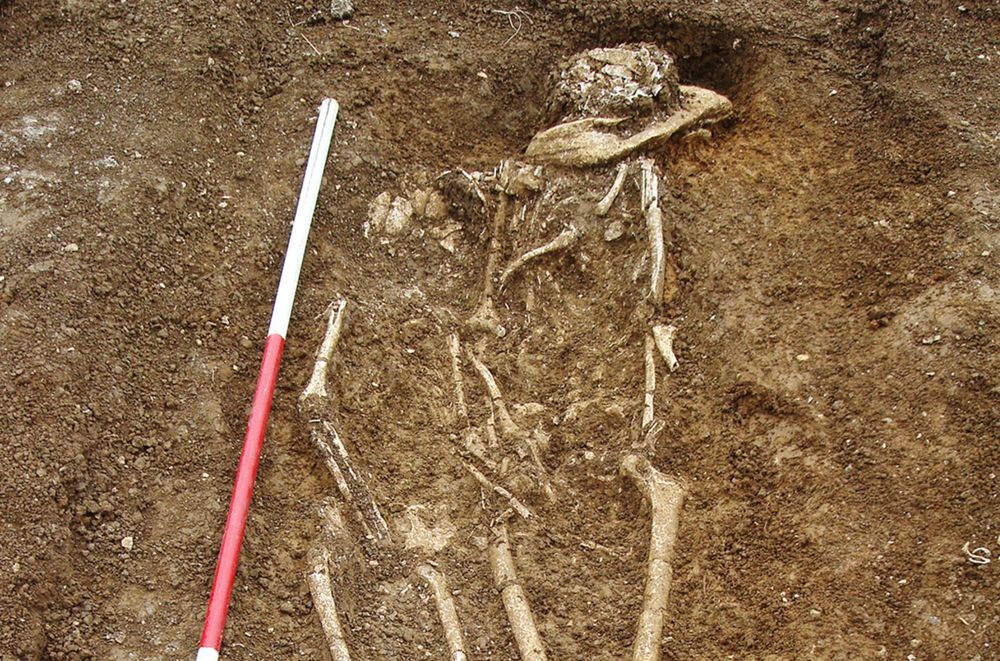
Youths buried in Anglo-Saxon cemeteries carried West African DNA
Despite bearing remarkably far-flung genetic origins, a girl and young man were buried just like their peers
Anglo-Saxons with West African roots: DNA analysis of 7th century burials reported in @antiquity.ac.uk today reveals long-distance connections reached across continents and cultures. Read about it @science.org:
13.08.2025 03:27 — 👍 326 🔁 134 💬 4 📌 23
😅😅 good one and good summary!
08.08.2025 19:45 — 👍 3 🔁 0 💬 0 📌 0

Population history of the Southern Caucasus
Archaeogenetic study reveals this region’s population history in unprecedented detail, generating a DNA transect spanning nearly 5,000 years
#Population history of the Southern #Caucasus: Archaeogenetic study generates #DNA transect spanning nearly 5,000 years. In @cellpress.bsky.social by Eirini Skourtanioti, Xiaowen Jia, @hringbauer.bsky.social & an intl. team. #PopulationGenetics More: tinyurl.com/8r39ywfu & doi.org/10.1016/j.ce...
07.08.2025 15:14 — 👍 10 🔁 1 💬 0 📌 0

Population history of the Southern Caucasus
Archaeogenetic study reveals this region’s population history in unprecedented detail, generating a DNA transect spanning nearly 5,000 years
Read more in the press release by @mpi-eva-leipzig.bsky.social.
Big thanks to the international research team behind this work, crucially also from Georgia. 🇬🇪🙏
And big congratulations to Eirini Skourtanioti and Xiaowen Jia - the dynamic co-first author team! 👏 🎊
www.eva.mpg.de/press/news/a...
07.08.2025 18:56 — 👍 7 🔁 1 💬 0 📌 0
Was Rapa Nui less isolated than thought? ⏬️
There is also genetic evidence of late inter-island contacts: When re-modelling the Ioannidis et al 2020 split dates with a corrected model we show that their genetic "settlement" dates actually reflect later movements www.biorxiv.org/content/10.1...
07.07.2025 18:22 — 👍 9 🔁 0 💬 1 📌 0
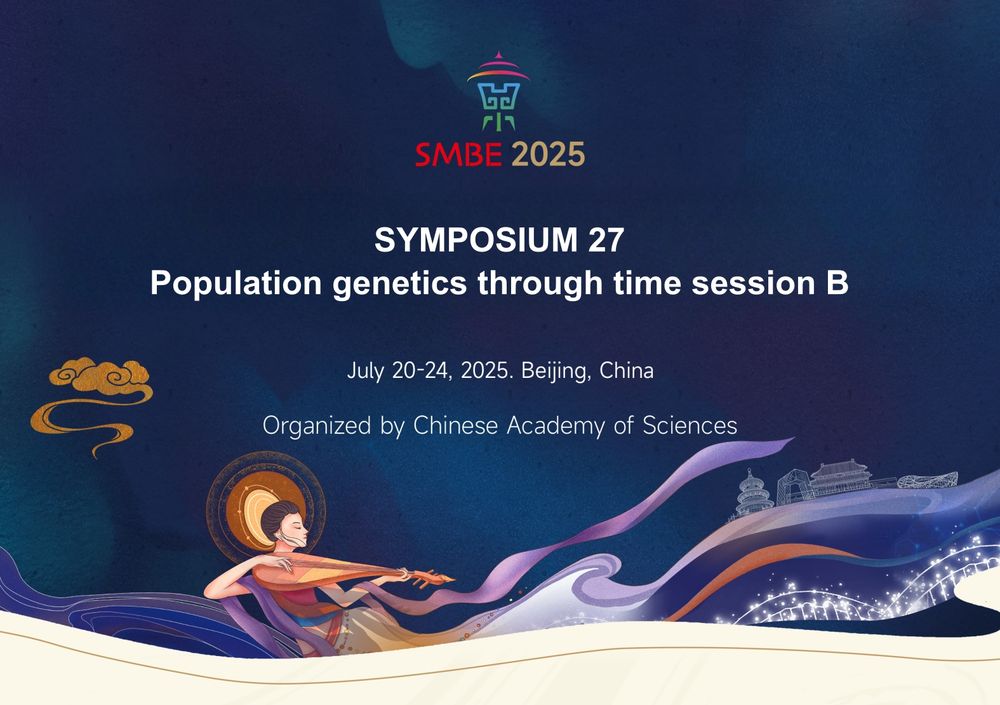
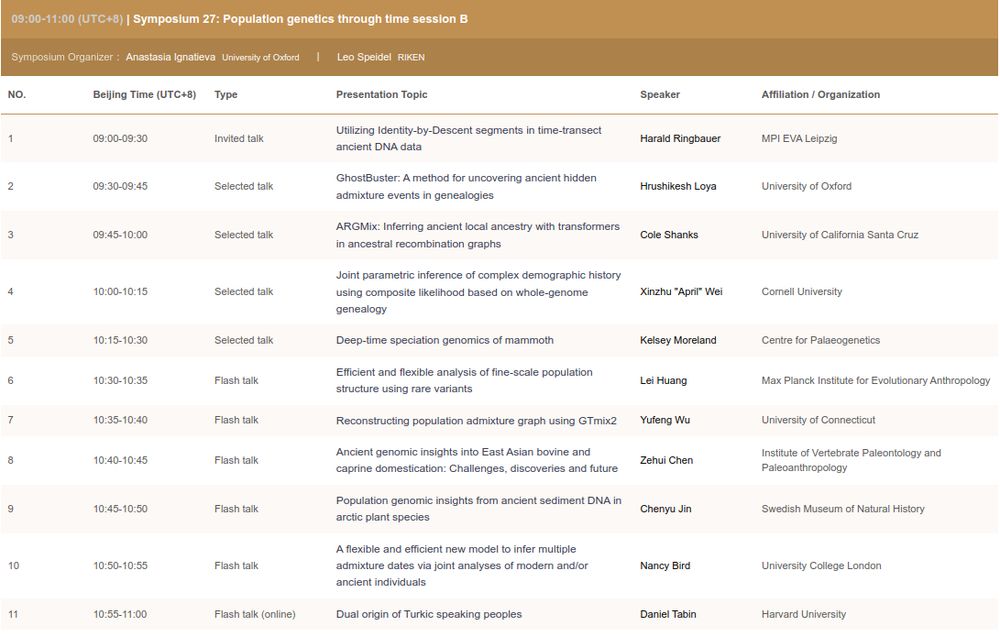
#SMBE2025 Symposium 27: Population genetics through time session B
🔗 smbe2025.scimeeting.cn/en/web/program/25070
05.07.2025 11:27 — 👍 2 🔁 4 💬 1 📌 1
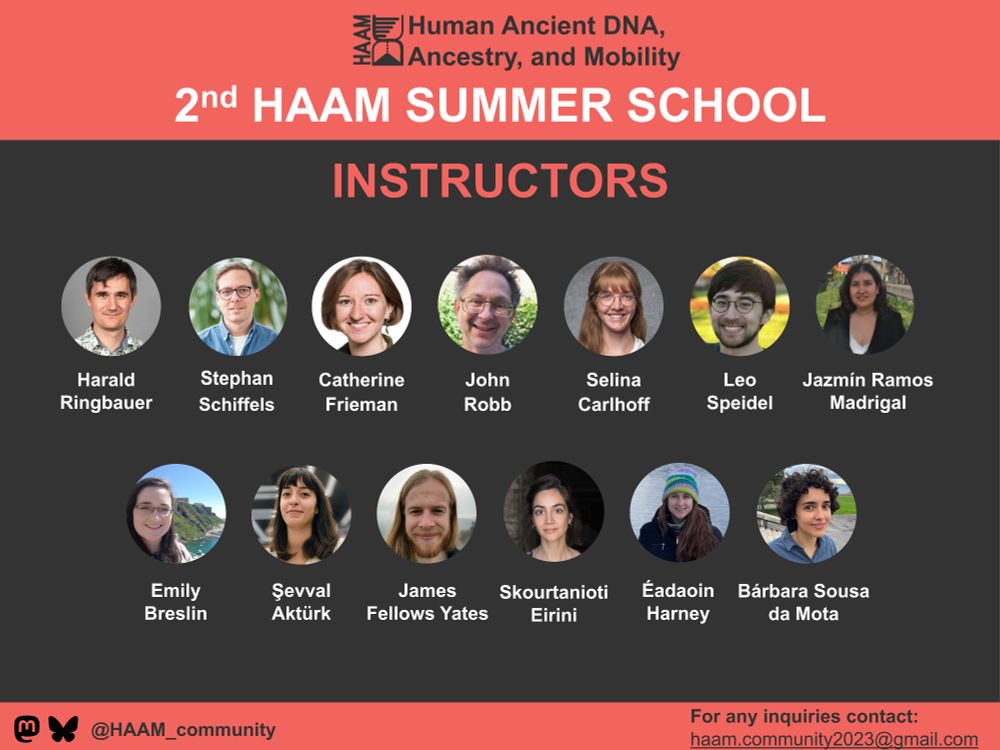
🧵1/n ✨🔮✨ Meet (y)our instructors of this year's #HAAMsummerschool 👇 #aDNA #course #humanpopgen
09.06.2025 09:03 — 👍 22 🔁 9 💬 13 📌 3

Changes to the 2026 and 2027 Work Programmes
With the launch of the competitions for grants under ERC Work Programme 2026 in July of this year, several changes to the submission of applications and the evaluation of proposals will apply. The mai...
Planning to apply for #research #funding from the ERC?
From the next application rounds, expect changes to the:
• proposal structure
• evaluation process
• extra funding you can request
• eligibility for Starting & Consolidator #Grants (from 2027)
More 👇 europa.eu/!RPHWvv
02.06.2025 10:02 — 👍 145 🔁 102 💬 3 📌 17
Now published in PNAS: www.pnas.org/doi/10.1073/...
23.05.2025 18:39 — 👍 98 🔁 40 💬 1 📌 0
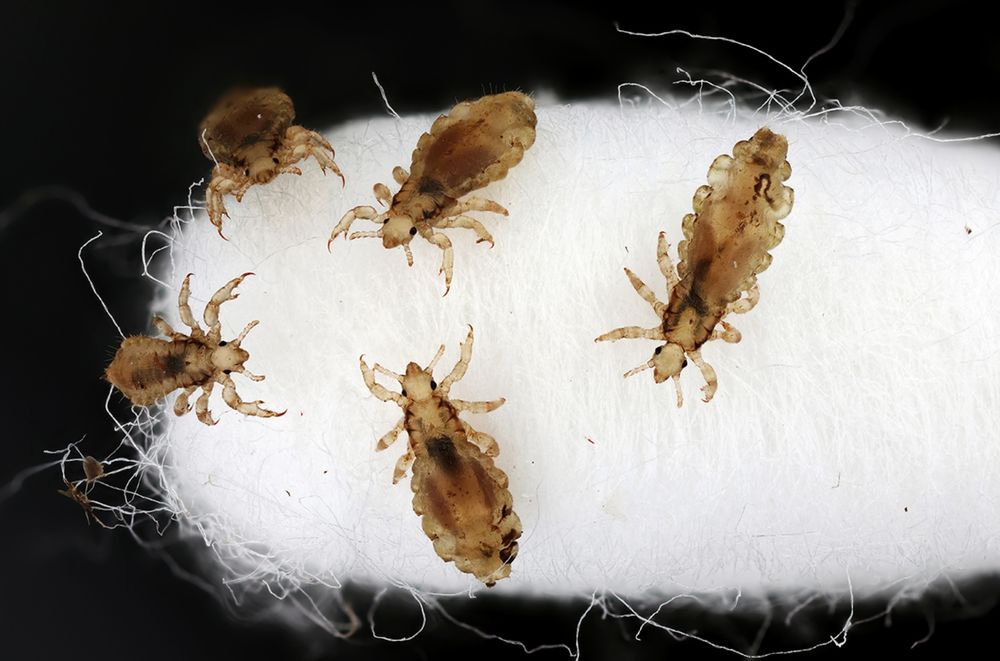
Clothing—not agriculture—helped spread a tick disease 5000 years ago
New study of a pathogen’s Bronze Age spread challenges longstanding links between disease and early agriculture
Scientists used to think diseases that jump from animals to people really took off when people started domesticating cattle, sheep and goats 11,000 years ago. A new look at ancient bacterial DNA in @science.org by @poojaswali.bsky.social and colleagues suggests the pivotal moment came much later.
22.05.2025 20:25 — 👍 86 🔁 28 💬 2 📌 3
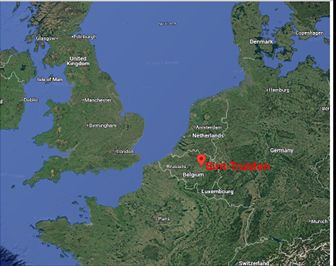
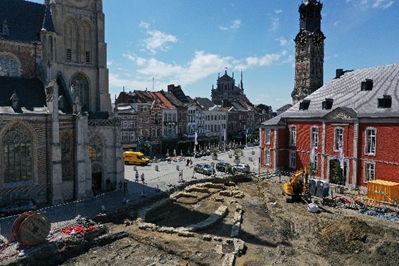
Discover our results of the largest ancient DNA study ever conducted on a single burial site: 400 skeletons from the Belgian city Sint-Truiden (8th–18th century). A unique glimpse into 1000 years of genetic history. (1/9) @kuleuvenuniversity.bsky.social
20.05.2025 18:29 — 👍 30 🔁 14 💬 3 📌 2
Yeah, the North America parallel came to our mind too! It's a great example of culture&language being not tied to one's genetic ancestry.
24.04.2025 18:58 — 👍 2 🔁 0 💬 2 📌 0
Thanks @aylwyn-scally.bsky.social and @pontus-skoglund.bsky.social 🙏
Initially, we had more Sicilian outliers genetically from the Eastern Mediterranean, but C14 dating always put them to Roman times (see PCA above - a interesting substory).
Seeing the Punic cline "emerge" was quite exciting!
24.04.2025 18:54 — 👍 1 🔁 0 💬 0 📌 0
PhD student at Szpiech lab @Penn state. Human genetics. Runs of homozygosity. Computational simulation. Spatial Popgen.
Physicist, Energiewende-supporter
Youtube-Kanal:
https://www.youtube.com/c/MartinHundhausen
🔬 MSc. in Biochemistry
🎨 Working on Visual Science Communication: Science Illustration, Infographics and Data Visualization
mariacarlosoliveira.com
FWO fellow @ KU Leuven studying the origin and evolution of human language
@vandenberglab.bsky.social
winner of the 2025 LAVA Scholarship for autistic researchers
pedagoog, bioloog en ervaringstaalkundige
Chemist & head of department Materials Chemistry @BAMresearch with interest in materials science 📚 & ☕️. My patronus is a double espresso. My views. She/her
Assistant Prof at Masaryk University. Dioscuri Centre for Stem Cell Biology and Metabolic Diseases #zebrafish #devbio 🇸🇰🇨🇿🇪🇺🇺🇸 , he/him, *All views my own
Professor of Biology at UF; evolutionary genetics, mostly of bryophytes, with a side of tundra ecology
Postdoc at U. Puerto Rico - Río Piedras |
Speciation, adaptation, genomics
PhD student, Archaeogenomics Lab, University of Pavia | currently in Erasmus in Copenhagen, Schroeder Group
Personal site: https://g-villani.github.io/giacomovillani/
PhD student
University of Pavia
#genpop 🌍👣 #ancientDNA💀🧬
A career network featuring science jobs in academia and industry.
Visit our platform at www.science.hr
Anthropological geneticist specializing in ancient DNA | PhD Candidate @ University of Kansas
Ph.D. Candidate working on maize. Chaotically interdisciplinary, but generally in the realm of pop gen, domestication, plants, and people.
From Delco & Philly (go birds! 🦅), PhD in progress at UC Davis 🐄
Philosophy of Biology
University of Bordeaux | Milan
He/Him
GitHub: https://github.com/rustcodepro
Bioinformatics Rust 🦀 Crates : https://crates.io/users/rustcodepro
Bioinformatician, Machine and Deep Learning. I write my code myself and ignore autocorrect typos. Read post on better ways in replies.
Palaeoanthropologist @ Natural History Museum, London. Interested in functional adaptation, the biological implications of behaviour, and humans of the late Pleistocene.
Geneticist interested in (meiotic) recombination and impact of chromatin structure on DNA functions
http://dgb.amu.edu.pl
Posts about jobs, conferences, etc. from the Evolution Directory (EvolDir) mailing list https://evol.mcmaster.ca/evoldir.html, run by Brian Golding. This bot is run by @rdmpage.bsky.social. Problems: https://github.com/rdmpage/evoldir-bluesky/issues
PhD in Anthropology and Toxicology.
Assistant Professor of Anthropology at the University of Texas at Austin.
Genetics, epigenetics, aDNA, adaptation









